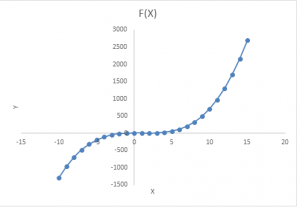This set of Distillation Design Multiple Choice Questions & Answers (MCQs) focuses on “Inside Out Method”.
1. Boston and Sullivan gave the concept of the
a) False method
b) Binary method
c) MESH Method
d) Inside Out Method
View Answer
Explanation: Boston and Sullivan gave the concept of the Inside Out Method in 1973, MESH method involve the satisfaction of all equations.
2. ln Sbj is represented as
a) ln (KbjLJ/VJ)
b) ln (Kbj/VJ)
c) ln( KbjLJ)
d) ln (LJ)
View Answer
Explanation: ln Sbj = ln (KbjLJ/VJ), this also resembles the same as the stripping factor that is used in the matrix calculations.
3. The vapors side product ln Rvj is given as
a) ln (KbjLJ/VJ)
b) ln (WbjLJ/VJ)
c) ln (KbjLJ/WJ)
d) ln (WJ)
View Answer
Explanation: ln Rvj = ln (WjLJ/VJ) is the vapors side product, L and V respectively measuring the flow rates of liquid and gas streams.
4. The liqiud side product ln RLj is given as
a) ln (KbjLJ/VJ)
b) ln (Wbj/VJ)
c) ln (KbjLJ/WJ)
d) ln (WJ/LJ)
View Answer
Explanation: RLj= ln (WJ/LJ) is the liquid side product, calculation of R factor for both components i and as well as j are equally important as that used in Sij.
5. For Russell method, ln Kbj is defined as
a) Aj – (Bj/Tj)
b) – (Bj/Tj)
c) Aj (Bj/Tj)
d) Aj + (Bj/Tj)
View Answer
Explanation: For Russell method ln Kbj = Aj–(Bj/Tj), the Russell equations resembles the same as that of the Antoine equation for detecting vapor pressure.
6. For Boston method, ln Kbj
a) Aj + B (1j/Tj – 1/T*)
b) Aj – B (1j/Tj – 1/T*)
c) Aj – B (1j/Tj + 1/T*)
d) (1j/Tj + 1/T*)
View Answer
Explanation: For Boston method ln Kbj = Aj – B (1j/Tj – 1/T*), this method is a revised version of the Russell method including T* i.e. equilibrium temperature.
7. HJ is defined as the
a) Ideal enthalpy
b) Total enthalpy
c) Final enthalpy
d) Pure enthalpy
View Answer
Explanation: HJ is defined as the Ideal enthalpy based on liquid and gas compositions, while Hideal is defined as the ideal enthalpy.
8. HJ is formulated as
a) H* /ϫHVJ
b) H*- ϫHVJ
c) H* ( ϫHVJ)
d) H* + ϫHVJ
View Answer
Explanation: HJ = H* + ϫHVJ, here H* is equilibrium enthalpy and which is added to the difference of x with the current enthalpy.
9. Total balance material balance is given as
a) αijSbj
b) αijHbj
c) αijDbj
d) αijVbj
View Answer
Explanation: Total balance material balance SIJ = αijSbj,alpha is defined as the relative volatility and acts here as a correction factor.
10. The given function f(x) = x3-3X2+ 4 root is?
a) Negative
b) Positive
c) Unity
d) Zero
View Answer
Explanation: The given plot is of f(x) = x3-3X2+ 4, calculating f(0)= 4 and f(1) =2 thus it is both negative and positive as the root does not change.
Sanfoundry Global Education & Learning Series – Distillation Design.
To practice all areas of Distillation Design, here is complete set of 1000+ Multiple Choice Questions and Answers.
If you find a mistake in question / option / answer, kindly take a screenshot and email to [email protected]
- Practice Chemical Engineering MCQs
- Check Chemical Engineering Books
- Check Distillation Design Books
- Apply for Chemical Engineering Internship

